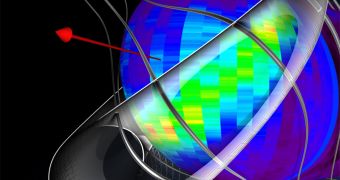Using data from the NASA Interstellar Boundary Explorer (IBEX), a team of astronomers was recently able to collect a wealth of data on the nature of the interstellar space through which our solar system currently travels inside the Milky Way. The study may also help explain why the solar system gets more cosmic rays from one direction than another.
Voyager 1 data were very useful for this study, but not as much as experts had hoped. While the probe did manage to exit the heliosphere – the maximum extent of the Sun's influence over interstellar space – its readings are only valid for one direction of motion as the solar system moves through the galaxy.
By combining Voyager 1 and IBEX data, researchers were over the past few years able to gain a deeper understanding of the magnetic system developing around the solar system as it moves through space. However, these studies also raised a number of new issues, which still require explanations.
One of the most interesting areas of research has been to determine how and why massively energetic cosmic ray particles stream inside the solar system from elsewhere in the Milky Way. What IBEX found is a magnetic field that is nearly perpendicular to the motion of the Sun through the galaxy.
These data may soon be used to explain why one side of the Sun appears to be getting higher amounts of high-energy cosmic rays than the other. “It's a fascinating time,” says the first author of the paper, researchers Nathan Schwadron from the University of New Hampshire in Durham.
“Fifty years ago, we were making the first measurements of the solar wind and understanding the nature of what was just beyond near-Earth space. Now, a whole new realm of science is opening up as we try to understand the physics all the way outside the heliosphere,” the expert adds.
Details of the new study appear in a paper published in the February 13 issue of the esteemed scientific journal Science Express. A consortium of universities and research centers in the United States also contributed to the research effort.
“At some level, it's like trying to determine the wind direction when you're riding a bike very quickly and the wind isn't particularly strong. There's some effect from the wind, but it's small and hard to measure,” says IBEX project scientist Eric Christian, from the NASA Goddard Space Flight Center.

 14 DAY TRIAL //
14 DAY TRIAL //